When the Northcentral Pennsylvania Conservancy was given funding restricted to “a water quality improvement project in Lycoming County” staff recognized this was a unique opportunity. Normally funding is focused on streams that are impaired and already experiencing pollution. This funding wasn’t limited in this way.
Lycoming County Conservation District provided several ideas for projects that would address pollution issues on streams that weren’t yet impaired. One of the ideas was for a stretch of Plunketts Creek on State Game Lands 134 (near Proctor, about 1.7 miles upstream from the confluence with Loyalsock Creek).
The State Game Lands had been used a propagation farm until 2017 when it was converted to “regular” State Game Lands. While being used to raise turkeys and then pheasants an earthern berm had been built to protect the farm from flooding.
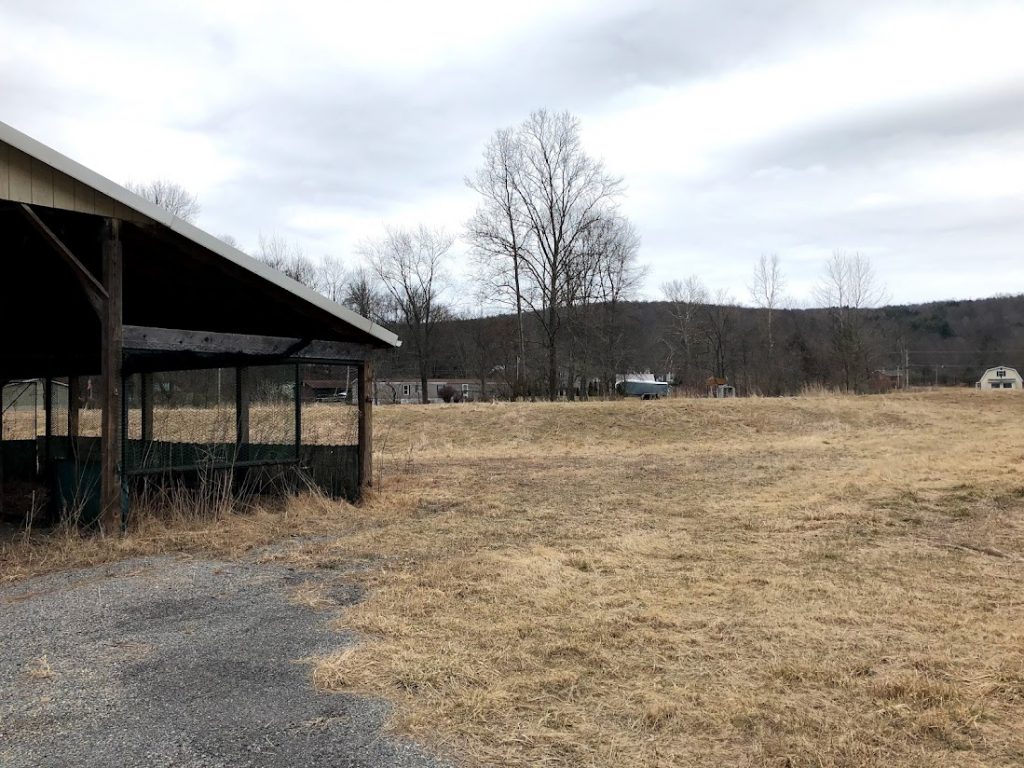 Here you can see the berm behind a “catch pen” that remains from the days of raising pheasants on site. The sloped berm behind the catch pen is about 5-feet to 6-feet high.
Here you can see the berm behind a “catch pen” that remains from the days of raising pheasants on site. The sloped berm behind the catch pen is about 5-feet to 6-feet high.
A design was developed to remove all 2,200 linear feet of the earthen berm. Some of the material would go to a road project on a different area of the same State Game Lands with the reaminder stockpiled on site, out of the floodway. With the berm gone, Plunketts Creek will be reconnected to its floodplain and be able to flow into the floodplain during high water.
Project partners were brought in to assist with the design and costs associated with the work. In addition to the funding that started this project additional funds would be needed.
NPC applied to the Department of Defense’s Innovative Readiness Training program to serve as a training site for the 333rd Army Reserves Engineering Unit out of Reading. A Sergant First Class in the unit also works for the U.S. Fish and Wildlife Service and knew the project would be a great training opportunity for the soldiers.
While the Covid-19 pandemic prevented the 333rd from training in 2020, there was work done in 2020 to prepare the site and collect data to track the Creek’s response.
Susquehanna University researchers collected data on the fish, macroinvertebrates, and substrate present in June 2020. They’ll use this information in comparison to data collected in the future to see how the stream changes once it can access its floodplain.
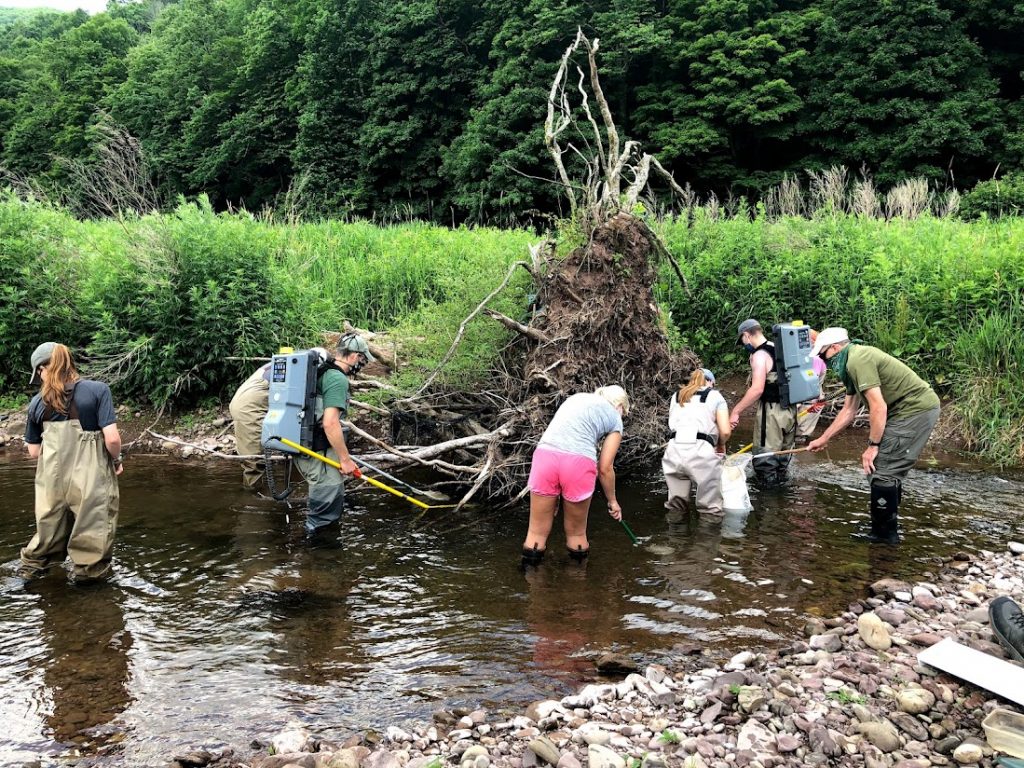 Susquehanna University students and researchers use electrofishing backpacks to assess fish populations in Plunketts Creek. The roots on this downed tree were “home” to quite a few fish of different species.
Susquehanna University students and researchers use electrofishing backpacks to assess fish populations in Plunketts Creek. The roots on this downed tree were “home” to quite a few fish of different species.
In August 2020 the Pennsylvania Fish and Boat Commission installed log structures through a stretch of the stream to stabilize the eroding stream banks (erosion that was happening at least in part because of the berm). Several months later trees were planted on one side of the Creek in this stretch. The tree roots will help provide further stabilization.
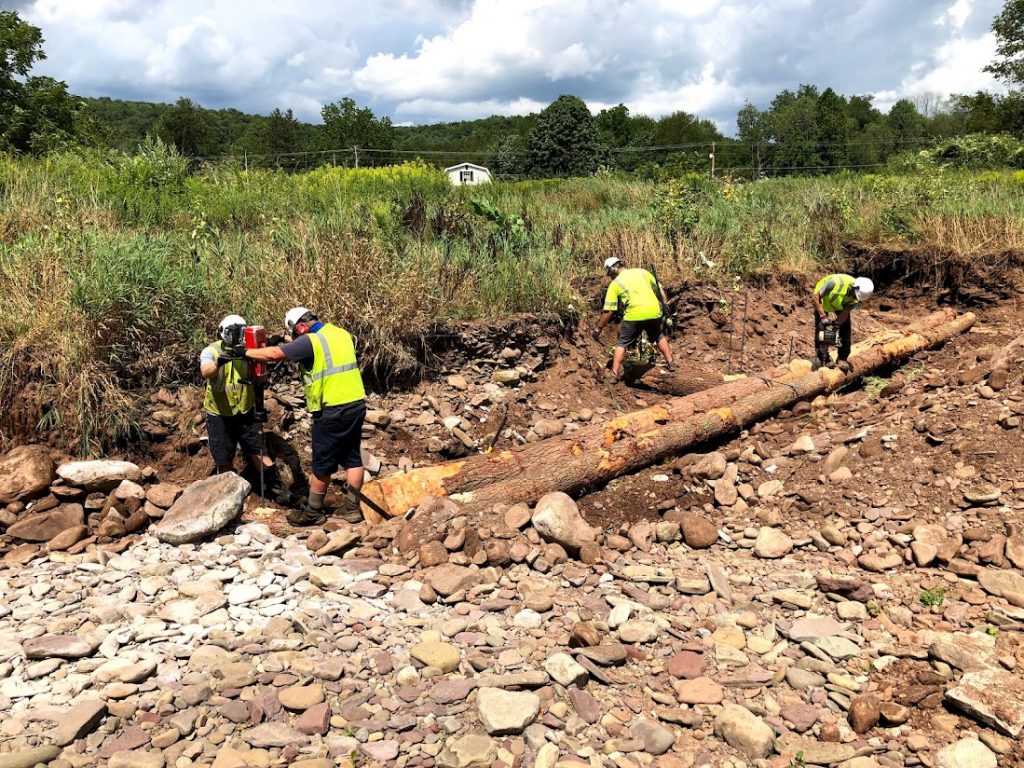 Pennsylvania Fish and Boat Commission’s stream habitat staff worked to install a series of log structures along the Creek to help stop the erosion. You can see the eroded bank behind the two PFBC-ers operators the jackhammer on the left.
Pennsylvania Fish and Boat Commission’s stream habitat staff worked to install a series of log structures along the Creek to help stop the erosion. You can see the eroded bank behind the two PFBC-ers operators the jackhammer on the left.
The 333rd moved in for their training on August 1, 2021. Over the next 20 days the 30 soldiers worked to build their skills in driving and operating equipment while pulling apart the berm and moving 1,500 truck loads of the material.
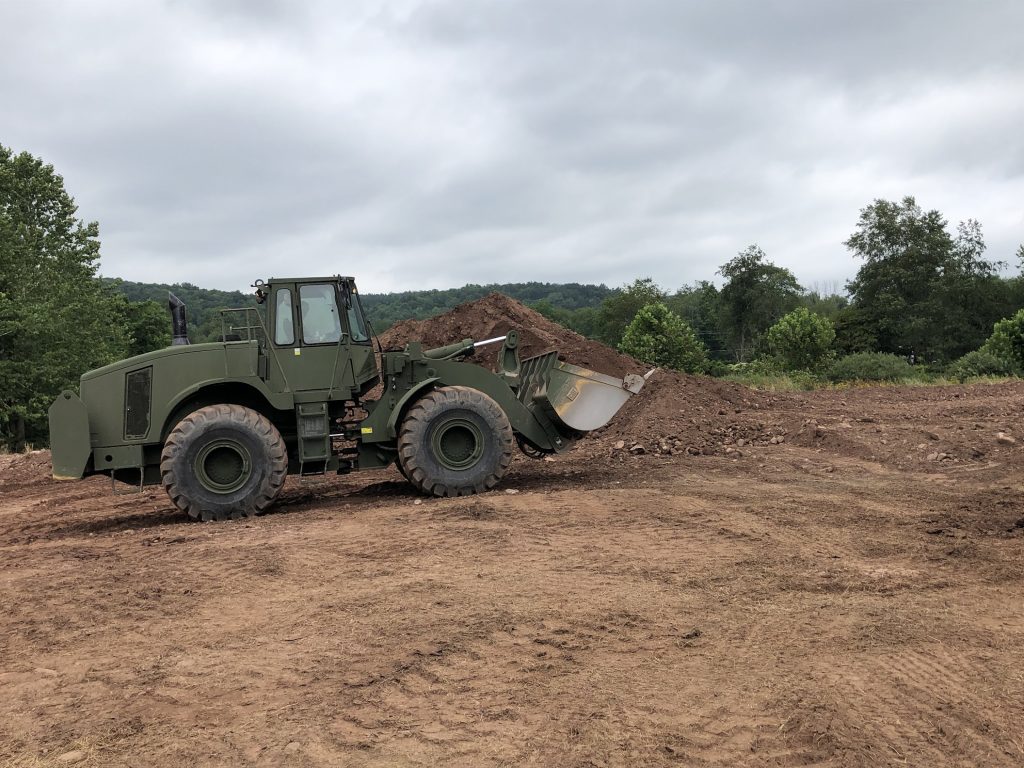 The 333rd brought equipment with them, including this loader. Soldiers gained experience in the equipment and improved their skills while also helping with this conservation project.
The 333rd brought equipment with them, including this loader. Soldiers gained experience in the equipment and improved their skills while also helping with this conservation project.
The more experienced soldiers worked on the final grading. We wanted to ensure the Creek had easy access to its floodplain so it can rise up and recede back down without any issues or further erosion.
The soldiers hydroseeded the site with a mix of quick growing oats and rye and native wildflowers that are good for pollinators and birds.
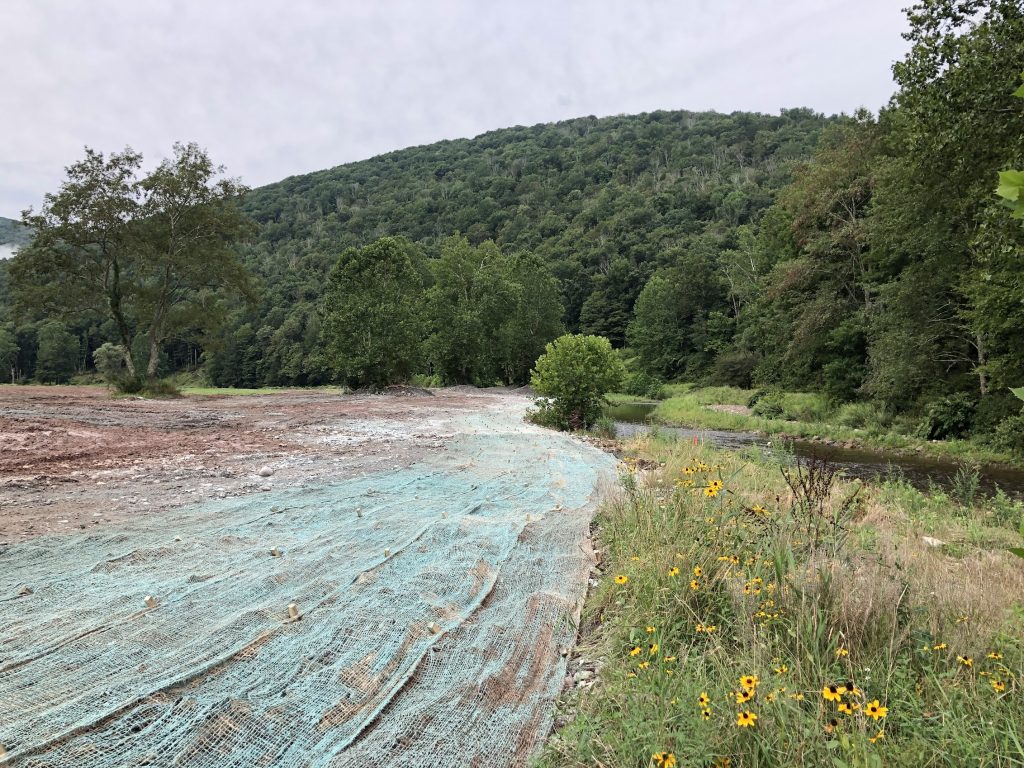 The “greenish-blue” area was hydroseeded. Water was mixed with seeds and a mulch of ground paper (which gives it the green color) and sprayed on the ground. Jute mat, which is cocount twine woven into a grid was also put down to help hold the soil in place until vegetation can estatblish.
The “greenish-blue” area was hydroseeded. Water was mixed with seeds and a mulch of ground paper (which gives it the green color) and sprayed on the ground. Jute mat, which is cocount twine woven into a grid was also put down to help hold the soil in place until vegetation can estatblish.
In additon to the water quality benefits, the berm’s removal also will provide better habitat for wildlife and access to the Creek for wildlife and people.
During the project NPC’s staff wrote several blog posts highlighting the work underway. You can access those here:
Army Reserve Engineering Unit Partnering with NPC and PGC on Floodplain Reconnection – July 27, 2021
Plunketts Creek Berm Removal One Step Closer – August 3, 2021
333rd Makes Progress at Plunketts Creek – August 14, 2021
Berm Removal Along Plunketts Creek Wraps Up – August 24, 2021
Survey Work at Plunketts Creek – September 13, 2021